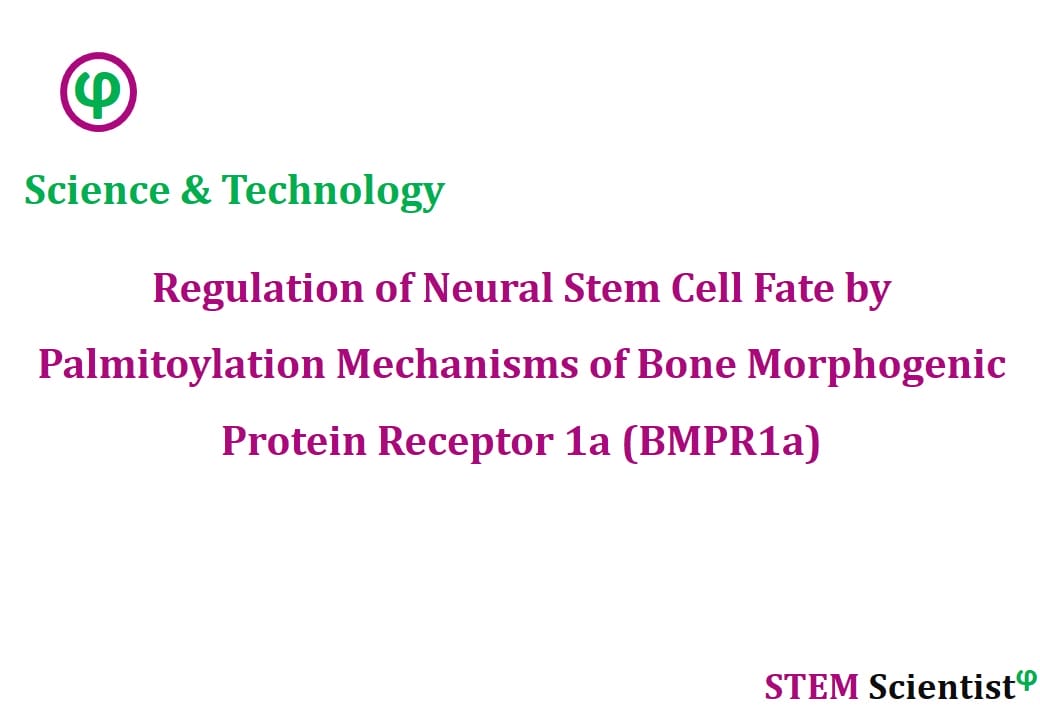
The following study was conducted by Scientists from Laboratory of Neural Plasticity, Faculties of Medicine and Science, Brain Research Institute, University of Zurich; Center for Transgenic Models, University of Basel, Switzerland. Study is published in Proceedings of the National Academy of Sciences Journal as detailed below.
Proceedings of the National Academy of Sciences 116(51): 25688-25696
Palmitoylation of BMPR1a Regulates Neural Stem Cell Fate
Significance
Neural stem cells (NSCs) generate neurons and glia throughout life. Using global S-acylation profiling in NSCs, we identified BMPR1a, a main driver of embryonic and postnatal development to be S-acylated. We showed that BMPR1a is S-acylated in embryonic stem cells and NSCs, and identified 3 distinct S-acylated sites. We showed that S-acylation of BMPR1a is important for BMPR1a trafficking in vitro and characterized the importance of BMPR1a S-acylation for canonical and noncanonical BMP signaling. We generated a knock-in mouse for BMPR1a, deficient for S-acylation at site 180, and identified BMPR1a S-acylation as a regulatory mechanism controlling oligodendrogenesis in vitro and in vivo. Thus, we here provide insight on how the diverse output of BMPR1a-dependent signaling is regulated throughout development.
Abstract
Neural stem cells (NSCs) generate neurons and glial cells throughout embryonic and postnatal brain development. The role of S-palmitoylation (also referred to as S-acylation), a reversible posttranslational lipid modification of proteins, in regulating the fate and activity of NSCs remains largely unknown. We used an unbiased screening approach to identify proteins that are S-acylated in mouse NSCs and showed that bone morphogenic protein receptor 1a (BMPR1a), a core mediator of BMP signaling, is palmitoylated. Genetic manipulation of S-acylated sites affects the localization and trafficking of BMPR1a and leads to altered BMP signaling. Strikingly, defective palmitoylation of BMPR1a modulates NSC function within the mouse brain, resulting in enhanced oligodendrogenesis. Thus, we identified a mechanism regulating the behavior of NSCs and provided the framework to characterize dynamic posttranslational lipid modifications of proteins in the context of NSC biology.
Source:
Proceedings of the National Academy of Sciences
URL:https://www.pnas.org/content/116/51/25688
Citation:
Wegleiter, T., K. Buthey, et al. (2019). “Palmitoylation of BMPR1a regulates neural stem cell fate.” Proceedings of the National Academy of Sciences 116(51): 25688-25696.


